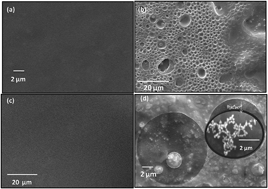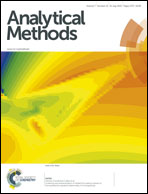Electrochemical response of agar ionogels towards glucose detection
Abstract
We have reported a sensing platform comprising of agar ionogels (IGs) made in ionic liquid solutions (1-octyl-3-methyl imidazolium chloride [C8mim][Cl] and 1-ethyl-3-methylimidazolium chloride [C2mim][Cl]) and used it for glucose oxidase (GOx) immobilization for glucose detection. The ionogels were deposited onto an indium tin oxide (ITO) coated glass plate using the drop-casting technique. These agar–[C8mim][Cl]/ITO (Ag–C8/ITO) and agar–[C2mim][Cl]/ITO (Ag–C2/ITO) substrates were used for immobilization of GOx, which was selected as a model enzyme to investigate its interaction with these electrodes using electrochemical techniques. Structural and morphological studies of these GOx/Ag–C8/ITO and GOx/Ag–C2/ITO electrodes were performed by using scanning electron microscopy (SEM), Fourier transform infrared spectroscopy (FTIR) and electrochemical techniques (CV). These GOx/Ag–C8/ITO and GOx/Ag–C2/ITO bioelectrodes exhibited improved glucose detection capability in the concentration range of 0.27–16.7 mM and 0.28–5.6 mM with sensitivity ≈4.1 μA mM−1 cm−2 and 14.6 μA mM−1 cm−2, respectively. The values of apparent Michaelis–Menten constant (Km) were 0.023 mM and 0.0007 mM for the aforesaid two cases respectively. It is shown that customization of agar hydrogels in green solvent medium widens the scope of their potential applications in glucose sensing in real samples.


 Please wait while we load your content...
Please wait while we load your content...